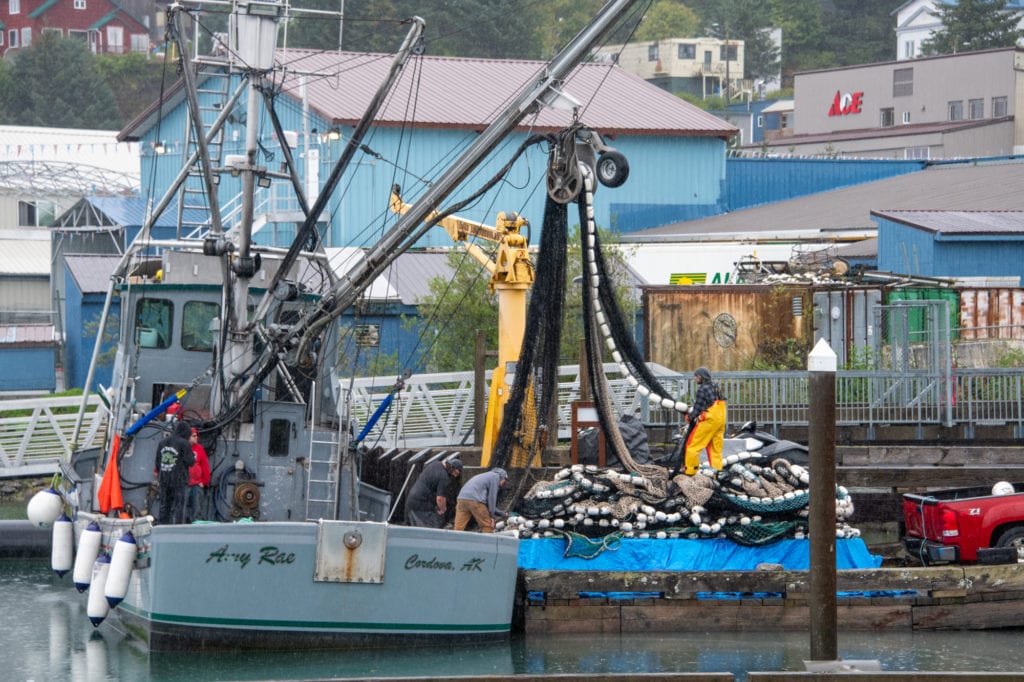
Even as the 2020 season is winding down, the catch of coho, chum and sockeye salmon is rising in Prince William Sound.
Preliminary statewide harvest numbers compiled by the Alaska Department of Fish and Game showed that as of Wednesday, Sept. 2, the commercial catch for Prince William Sound had reached 24.3 million salmon, including some 21.3 pink, 1.9 million chum, 937,000 sockeye, 130,000 coho and 4,000 Chinook. The latest figures showed a boost of 95,000 humpies, 30,000 coho and 1,000 sockeyes since ADF&G’s Sept. 1 preliminary report.
The Copper River District meanwhile was open for a 24-hour commercial fishing period on Thursday, Sept. 3.
State fisheries biologist in Cordova note that during the commercial fishing season that subsistence harvest may occur in the Copper River District concurrent in time and area with commercial fishing periods until that district is closed at the end of the season. Additionally, waters of the Copper River District are open to subsistence fishing from 6 a.m. to 10 p.m. Saturday, Sept. 5.
The Bering River District was open also on Thursday, Sept. 3 for a 24-hour commercial fishery, while the Eshamy District has closed for the season. The Coghill District opened for a 60-hour period on Sept. 3, excluding the Wally Noremberg Hatchery, Special Harvest Area and Terminal Harvest Area.
ADF&G also noted that the Prince William Sound Aquaculture Corp, has recommended that the Armin F, Korening and Cannery Creek Hatchery, Special Harvest Area and Terminal Harvest Area and corresponding hatcher subdistricts, plus the Wally Noremberg Hatchery remain closed to build broodstock.
The latest ADF&G preliminary harvest totals put the statewide commercial salmon harvest total at in excess of 108 million fish, including 55.5 million pink, 45 million sockeye, 6 million chum, 1.4 million coho and 215,000 king salmon. The year-to-date total of pink salmon is nearly identical to 2018, though with 16 million more pinks, about 12 million fewer keta and 5 million fewer sockeye, noted Garrett Evridge of the McDowell Group, who writes in-season commercial salmon reports every week on behalf of the Alaska Seafood Marketing Institute.
Historical data indicate that about three percent of the annual harvest occurs after week 35 in most years, Evridge said.
About 180,000 sockeye were harvested last week, nearly all in Kodiak and the Alaska Peninsula and Aleutian Islands region.
The year-to-date pink harvest of over 55 million fish is 44 percent and 47 percent ahead of 2018 and 2016 respectively. While Prince William Sound has contributed the most pink salmon, the area lags in is projected harvest by about one third. Harvest in Kodiak has been particularly strong with the region now more than 8 million fish ahead of its projected harvest of some 12 million salmon. Southeast Alaska has produced about 11 percent of the year-to-date pink harvest with landings at record low levels, Evridge said.
Keta landings statewide are 69 percent lower than a year ago and the five-year-average.
Coho landings are 55 percent below the five-year average in most areas, although Bristol Bay is ahead of last year with landings about 20 percent lower than the five-year average. Kodiak has been relatively strong with year-to-date harvests of 16 percent ahead of the five-year average of coho salmon.
Chinook production is lagging by about 70,000 fish, or 27 percent over 2019, while improved harvest in Southeast Alaska has narrowed the deficit on kings against 2019 by 3 percent.
ADF&G preliminary commercial salmon harvest reports are posted daily in-season at adfg.alaska.gov/index.cfm?adfg=commercialbyfisherysalmon.bluesheet.





